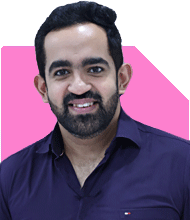Ramalingam Kalirajan |8078 Answers |Ask -Follow
Mutual Funds, Financial Planning Expert - Answered on May 21, 2024
He has an MBA in finance from the University of Madras and is a certified financial planner.
He is the director and chief financial planner at Holistic Investment, a Chennai-based firm that offers financial planning and wealth management advice.... more

Now am 42 years, i have 20lacs outstanding plot loan... going to buy apartment for 71 lacs.. 50lac saving.. 25 lacs need to take loan or i sell a plot in home town. My retirement plan. PPF-1LAcs per year.. how to plan more pls adivce.
You have a strong financial base with savings and a property. Your current focus is on managing loans and planning for retirement. Let’s evaluate your options for buying an apartment and improving your retirement plan.
Managing Property and Loans
You have an outstanding plot loan of Rs 20 lakhs and plan to buy an apartment for Rs 71 lakhs. With Rs 50 lakhs in savings, you need an additional Rs 21 lakhs to complete the purchase.
Considering Selling the Plot
Selling the plot in your hometown can be a good option to avoid taking another loan. This will reduce your debt burden and free up cash flow for other investments. Evaluate the current market value of the plot to ensure it meets your financial needs.
Taking a Loan
If selling the plot isn’t feasible, taking a loan of Rs 21 lakhs is an alternative. With your current financial status, managing this additional loan should be manageable, but it will add to your debt obligations.
Planning for Retirement
Your current retirement plan includes investing Rs 1 lakh per year in PPF. While this is a good start, diversifying your investments will provide better growth potential.
Increasing PPF Contributions
PPF is a safe investment with tax benefits. Increasing your annual contributions, if possible, can boost your retirement corpus. However, relying solely on PPF may not be sufficient for a comfortable retirement.
Exploring Actively Managed Funds
Actively managed funds can offer higher returns compared to traditional savings schemes. Fund managers actively make investment decisions to outperform the market, providing the potential for greater growth. Although they have higher fees, the benefits often outweigh the costs, especially for long-term goals.
Disadvantages of Direct Funds
Direct funds might seem attractive due to lower expense ratios, but they lack professional guidance. Investing through a Certified Financial Planner (CFP) offers expert advice and better fund selection. This professional support can lead to improved financial outcomes compared to managing direct funds independently.
Monthly Savings Plan
To enhance your retirement savings, consider setting aside a fixed amount monthly into diversified mutual funds. This systematic investment approach helps in building a substantial corpus over time. A mix of equity and balanced funds can provide both growth and stability.
Importance of Diversification
Diversifying your investments spreads risk and increases potential returns. Combining different asset classes like equity, debt, and balanced funds helps manage market volatility. This approach ensures a more secure and balanced portfolio.
Regular Portfolio Review
Regularly reviewing and adjusting your portfolio ensures it remains aligned with your goals. Market conditions and personal circumstances change over time, necessitating periodic adjustments. Regular check-ins with a CFP help keep your investments on track and optimized for growth.
Conclusion
Your financial journey is commendable. Managing your property investments and planning for retirement are crucial steps. Selling the plot or taking a loan are viable options for buying the apartment. Diversifying your retirement investments with actively managed funds and increasing your monthly savings can significantly enhance your retirement corpus. Regular reviews and professional guidance will keep you on the right path.
Best Regards,
K. Ramalingam, MBA, CFP,
Chief Financial Planner,
www.holisticinvestment.in
You may like to see similar questions and answers below
Ramalingam Kalirajan |8078 Answers |Ask -Follow
Mutual Funds, Financial Planning Expert - Answered on Jun 21, 2024
Ramalingam Kalirajan |8078 Answers |Ask -Follow
Mutual Funds, Financial Planning Expert - Answered on Jul 10, 2024
Ramalingam Kalirajan |8078 Answers |Ask -Follow
Mutual Funds, Financial Planning Expert - Answered on Jul 15, 2024
Milind Vadjikar |1087 Answers |Ask -Follow
Insurance, Stocks, MF, PF Expert - Answered on Oct 12, 2024
Ravi Mittal |543 Answers |Ask -Follow
Dating, Relationships Expert - Answered on Mar 06, 2025
Patrick Dsouza |1001 Answers |Ask -Follow
CAT, XAT, CMAT, CET Expert - Answered on Mar 06, 2025
Patrick Dsouza |1001 Answers |Ask -Follow
CAT, XAT, CMAT, CET Expert - Answered on Mar 06, 2025
Patrick Dsouza |1001 Answers |Ask -Follow
CAT, XAT, CMAT, CET Expert - Answered on Mar 06, 2025
Aamish Dhingra |10 Answers |Ask -Follow
Life Coach - Answered on Mar 06, 2025
Aamish Dhingra |10 Answers |Ask -Follow
Life Coach - Answered on Mar 06, 2025
Aamish Dhingra |10 Answers |Ask -Follow
Life Coach - Answered on Mar 06, 2025
Mihir Tanna |1031 Answers |Ask -Follow
Tax Expert - Answered on Mar 06, 2025
Jinal Mehta |98 Answers |Ask -Follow
Financial Planner - Answered on Mar 06, 2025
Radheshyam Zanwar |1337 Answers |Ask -Follow
MHT-CET, IIT-JEE, NEET-UG Expert - Answered on Mar 06, 2025



























